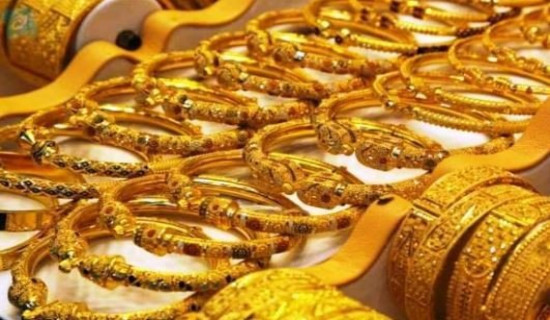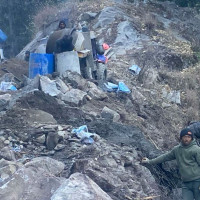- Wednesday, 3 December 2025
SAU is regional collaboration and shared identity: Prof. Aggarwal
Prof. K. K. Aggarwal has been serving as President of South Asian University (SAU) since December 2023. He was the founding Vice-Chancellor of Guru Gobind Singh Indraprastha University and later Chancellor of K R Mangalam University. Prof. Aggarwal has held key positions including Chairman of the National Board of Accreditation, and President of both the Computer Society of India and the Institution of Electronics and Telecommunication Engineers. He holds a PhD in reliability engineering and has authored notable works in his field. Modnath Dhakal of The Rising Nepal talked to Prof. Agrawal during the latter’s recent visit to Nepal about various issues of the SAU and regional academic integration. Excerpts:
What is the philosophy behind the establishment of the South Asian University (SAU)?
To understand the origins of this initiative, it's important to go back over 15 years, when the economies of the SAARC (South Asian Association of Regional Cooperation) countries were significantly less developed. At the time, India held the SAARC chairmanship, and the Indian Prime Minister recognised a key challenge: certain niche areas of education—while not in high demand—were extremely expensive to support. If each member country were to invest individually in such specialised fields, it would place a heavy financial burden on them.
The idea, then, was to establish a shared institution within the SAARC region that could focus on these specialised academic and research areas. For example, if Nepal required only 10 professionals in nanotechnology and Bangladesh 20, setting up separate labs in each country would be impractical, as the cost of establishing such facilities remains the same regardless of student numbers.
Instead, a central university could draw the best educators from across the region including experts from the diaspora—and deliver world-class training to a small but capable cohort, who would return to contribute to their home countries. India agreed to provide the land and infrastructure, bearing the capital costs. The operational expenses, however, would be shared among SAARC nations in agreed proportions, India covering about 60 per cent, Pakistan 12 per cent, Nepal 5 per cent, and so on. The concept was beautiful, and it has served the purpose to some extent but there is much to be done.
After a journey of one and a half decades, where do you find the SAU? Has it served the purpose?
Yes, it certainly has served its purpose in many meaningful ways. First and foremost, when students from across SAARC countries come together to study in one place, it naturally fosters a sense of regional unity and cultural integration. They celebrate each other’s festivals, enjoy get-togethers, and even host food festivals - one day featuring Nepali cuisine, the next day Bangladeshi dishes, and so on. These shared experiences go beyond academics, building bonds that promote mutual understanding and respect among future leaders of the region.
Secondly, the academic structure itself reinforces this spirit of cooperation. Departments such as International Relations and Sociology are designed with a regional perspective in mind, rather than focusing on any single country's viewpoint. This encourages students to think beyond borders, consider regional dynamics, and engage with issues affecting South Asia as a whole. In this way, the university is not only an educational hub but also a living example of regional collaboration and shared identity.
Could you highlight the status of students? Is it inclusive in terms of the SAARC member nations?
The student intake ratio is ideally set at 50 per cent from India, 40 per cent from other SAARC nations, and 10 per cent from outside the region. However, due to current challenges, such as lack of recognition of Afghanistan’s government and visa issues for Pakistani students, SAARC representation has dropped to around 20 per cent. We’re addressing this by expanding online education, allowing students to enrol without visa hurdles. We are also updating our programmes to meet present-day needs like launching courses in AI, data science, and the Internet of Things, which are increasingly vital across all SAARC countries.
What kind of benefits students are getting with their regional perspective in their academics? What is the status of employability of your students?
Studying abroad is a common aspiration among students from SAARC countries, but our university offers a compelling alternative. As an international institution, we provide a high-quality education at a fraction of the cost compared to studying in the US, UK, or Australia. Moreover, we offer generous scholarships, particularly for non-Indian students, which further reduces the financial burden. Our degrees are recognised across all SAARC nations, ensuring credibility and employability.
Another key advantage is proximity. Students from countries like Nepal, Sri Lanka, or Bangladesh remain closer to their home, allowing for easier travel and cultural familiarity, while still experiencing a rich, multicultural academic environment. This fusion of diverse cultures fosters deeper regional integration and mutual understanding.
Our graduates have consistently performed well globally. Many now hold faculty positions at leading universities abroad, with alumni from Nepal, Afghanistan, and Sri Lanka in senior academic roles. Until recently, expansion was limited due to a temporary campus. However, with the inauguration of a state-of-the-art 100-acre campus in New Delhi, we are now scaling up student intake and launching new programmes in science, technology, and management, disciplines vital to the region’s development.
Has there been any effort to forge collaboration or cooperation with other universities in the region?
Previously, our admissions were based on an entrance test conducted in each SAARC country, often with only one centre per nation, for example, in Nepal. However, this created accessibility issues, especially for larger countries like Pakistan or regions with logistical challenges such as Afghanistan. To make the process more inclusive, we’ve now introduced a remote, proctored examination system. Students can take the test from the comfort of their homes, monitored securely through software, removing the need for travel entirely. Additionally, if students are unable to take our entrance test, we now accept national-level entrance exams from their home countries as a valid criterion for admission.
Reputed academic institutions have built their prestige on the basis of investment in and amount of research. Where do you see the SAU as an academic institution from the research perspectives?
In terms of research, we’ve made excellent progress. Initially, nearly 50 per cent of our students were enrolled in research programmes which is a remarkably high proportion. However, we've since realised that employability and industry demands, especially in fields like engineering and management, extend beyond the PhD level. So now, we're aiming for a balanced mix of PhD, postgraduate, and undergraduate students to ensure wider impact and relevance. The Indian government has spent around INR 12 billion on the development of our world-class campus. Our annual operational budget is approximately INR 1.25 billion, with India covering 60 per cent. However, contributions from other SAARC nations have been inconsistent. For instance, Nepal made a payment this year but missed the previous few; Pakistan has not contributed for six or seven years; Bangladesh has paid sporadically.
This is not just another Indian university, it’s a regional initiative. The real question is whether SAARC nations truly value and take ownership of this project.
Given the current challenges facing SAARC as a regional organisation, including uncertainties about its future, have you encountered any difficulties or concerns regarding the university's continued functioning?
What you’ve said about SAARC is quite true and widely acknowledged. It’s not something you or I can directly resolve. But, I genuinely believe that the idea behind this university can continue to thrive, even amidst political tensions. Education, culture, and sport, in my view, should remain above geopolitics. They are the bridges that can keep dialogue and collaboration alive when other channels falter. This university, in that sense, holds real promise. It offers a hopeful path forward—one that can foster connection and understanding. Even if political setbacks persist for years, this institution could serve as a quiet catalyst for renewal. Of course, if SAARC were ever completely dissolved, the university’s future would inevitably come into question. But as long as there’s still even a glimmer of hope for regional cooperation, I believe this university has a valuable role to play.
If a university from Nepal wished to collaborate with the South Asian University, whether in academics, research, innovation, or even joint PhD programmes, what kind of opportunities or frameworks currently exist to facilitate such regional partnerships?
I believe there’s a real opportunity here. But, sadly, it has not yet materialised. I am raising this idea during every visit to Nepal. I’ve spoken to the University Grants Commission and the Ministry of Foreign Affairs, urging that this should move forward. It’s disheartening to see so many Nepali students attending third-rate foreign universities, often receiving substandard education. If the goal is to earn an international degree, why not create that opportunity here in the region?
We could easily begin with a small collaborative campus, perhaps with Kathmandu University, Tribhuvan University, or any other willing institution. Even a modest facility will suffice to start with. For instance, Nepal has several medical colleges. Why not establish a SAU-affiliated medical college? These degrees would be internationally recognised, quality-assured, and, importantly, not-for-profit. Nepali students are increasingly going abroad for education, so why not redirect that interest to SAU? It will be even better if we establish an SAU campus here, run on non-commercial terms. The advantage for Nepal is that it will have its own international university, focusing purely on academics rather than profit.







-square-thumb.jpg)



-original-thumb.jpg)




